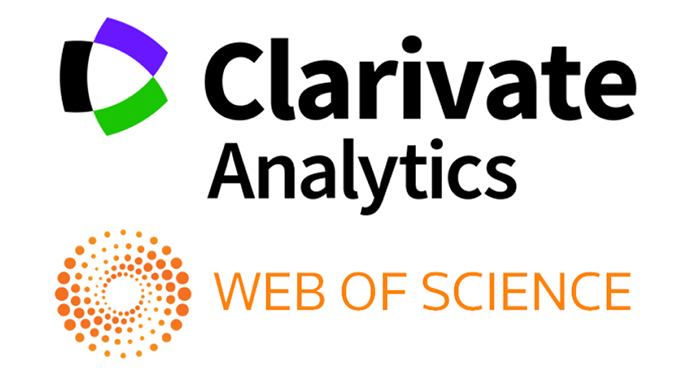PRINCIPLES OF IMPROVING STUDENTS’ LANGUAGE COMPETENCES OF NON-PHILOLOGICAL EDUCATION
Abstract
This article deals with the foundational principles guiding the enhancement of language competences among students pursuing non-philological education. The study recognizes the growing importance of language proficiency in various academic and professional contexts and seeks to provide a comprehensive framework for educators and institutions to improve students' language skills. By synthesizing current pedagogical theories, empirical studies, and practical applications, the research aims to identify key principles that can effectively elevate the language competences of non-philological education students.
References
2. Halliday, M. A. K. (1985). Spoken and Written Language. Deakin University Press.
3. Coyle, D., Hood, P., & Marsh, D. (2010). CLIL: Content and Language Integrated Learning. Cambridge University Press.
4. Dalton-Puffer, C. (2007). Discourse in Content and Language Integrated Learning (CLIL) Classrooms. John Benjamins Publishing.
5. Stoller, F. L. (2002). Content-Based Instruction: A Shell for Language Teaching or a Framework for Strategic Language and Content Learning? In J. Cenoz & F. Genesee (Eds.), Beyond Bilingualism: Multilingualism and Multilingual Education (pp. 67–89). Multilingual Matters.
6. Grabe, W., & Stoller, F. L. (1997). Content-Based Instruction: Research Foundations. In M. A. Snow & D. M. Brinton (Eds.), The Content-Based Classroom: Perspectives on Integrating Language and Content (pp. 5–21). Addison Wesley Longman.
7. Godwin-Jones, R. (2011). Emerging Technologies: Mobile Apps for Language Learning. Language Learning & Technology, 15(2), 2–11.
8. Coyle, D. (2005). Developing CLIL: Towards a Theory of Practice. AILA Review, 18(1), 3–31.
9. Wolff, D. (2009). CLIL: A Lesson in the Making. Folio: Journal of the Association for European Language Testers, 13(2), 15–25.
10. Johnson, M., & Jackson, A. (2015). Language Skills and Workplace Success: The Relationship between Proficiency in English and Occupational Status in the United States. TESOL Quarterly, 49(3), 546–567.
11. Wong, C., & Jones, P. (2012). Language Proficiency and Cognitive Development: A Longitudinal Study of Non-Philological University Students. Applied Linguistics, 33(3), 282–304.
12. Byram, M., & Feng, A. (2006). Living and Studying Abroad: Research and Practice. Multilingual Matters.
13. Norton, B., & Schmidt, R. (2011). Social Identity and Language Learning in Higher Education. Studies in Higher Education, 36(6), 709–722.
14. Black, P., & Wiliam, D. (1998). Assessment and classroom learning. Assessment in Education: Principles, Policy & Practice, 5(1), 7-74.
15. Wenger, E. (1998). Communities of practice: Learning, meaning, and identity. Cambridge University Press.
16. Celce-Murcia, M. (2001). Teaching English as a Second or Foreign Language. Heinle & Heinle.
17. Johnson, D. W., & Johnson, R. T. (1999). Learning Together and Alone: Cooperative, Competitive, and Individualistic Learning. Pearson.
18. Muriel, D. (2008). Language Learning Centers in the 21st Century: The Promise and the Challenge. National Foreign Language Center.
19. Richards, J. C., & Farrell, T. S. C. (2005). Professional Development for Language Teachers: Strategies for Teacher Learning. Cambridge University Press.
20. Kramsch, C. (1993). Context and culture in language teaching. Oxford University Press.
21. Willis, J., & Willis, D. (2007). Doing task-based teaching. Oxford University Press.
22. Hafner, C. A., & Miller, L. (2011). Fostering learner autonomy in English for science: A collaborative digital video project in a technological learning environment. Language Learning & Technology, 15(3), 68–86.
23. Smith, R., & Brown, A. (2018). The Role of Language Competences in Facilitating Interdisciplinary Collaboration in Higher Education. Journal of Interdisciplinary Studies in Education, 7(1), 45–60.
24. Utebaev T., Sarsenbaeva Z. Sprachliche analyse von sprichworten. Berlin Studies Transnational Journal of Science and Humanities. Vol. 1 Issue 1.5 Pedagogical sciences.
25. Сарсенбаева З. Ж. ПЕДАГОГИЧЕСКИЕ ВОЗМОЖНОСТИ ПОВЫШЕНИЯ ЛИНГВОКУЛЬТУРОЛОГИЧЕСКОЙ КОМПЕТЕНЦИИ СРЕДСТВАМИ ИЗУЧЕНИЯ ПОСЛОВИЦ //Colloquium-journal. – Голопристанський міськрайонний центр зайнятості, 2021. – №. 5 (92). – С. 22-24
26. kizi Sarsenbaeva Z. J. LINGUISTIC DIFFERENCES CONTRIBUTE TO VARYING INTERPRETATIONS OF SYMBOLS IN NON-REALISTIC WORKS.
27. kizi Sarsenbaeva Z. J. THE NUANCED ANALYSIS OF IMAGES AND SYMBOLS IN ENGLISH AND UZBEK NON-REALISTIC WORKS. 2023.
28. Сарсенбаева З. и др. СЛОВЕСНЫЕ ФРАЗЕОЛОГИЧЕСКИЕ ЕДИНИЦЫ В ИДИОМАХ НА АНГЛИЙСКОМ И КАРАКАЛПАКСКОМ ЯЗЫКАХ //СТУДЕНТ ГОДА 2018. – 2018. – С. 146-148.
29. Utebaev T., Sarsenbaeva Z. Sprachliche analyse von sprichworten. Berlin Studies Transnational Journal of Science and Humanities. Vol. 1 Issue 1.5 Pedagogical sciences.
30. Aleuov U., Utebaev T. The formation and development of pedagogical science in Karakalpakstan. T //Science and Technology. – 2007.
31. Savignon, S. J. (2002). Communicative language teaching: Linguistic theory and classroom practice. McGraw-Hill Education.


.jpg)

1.png)







